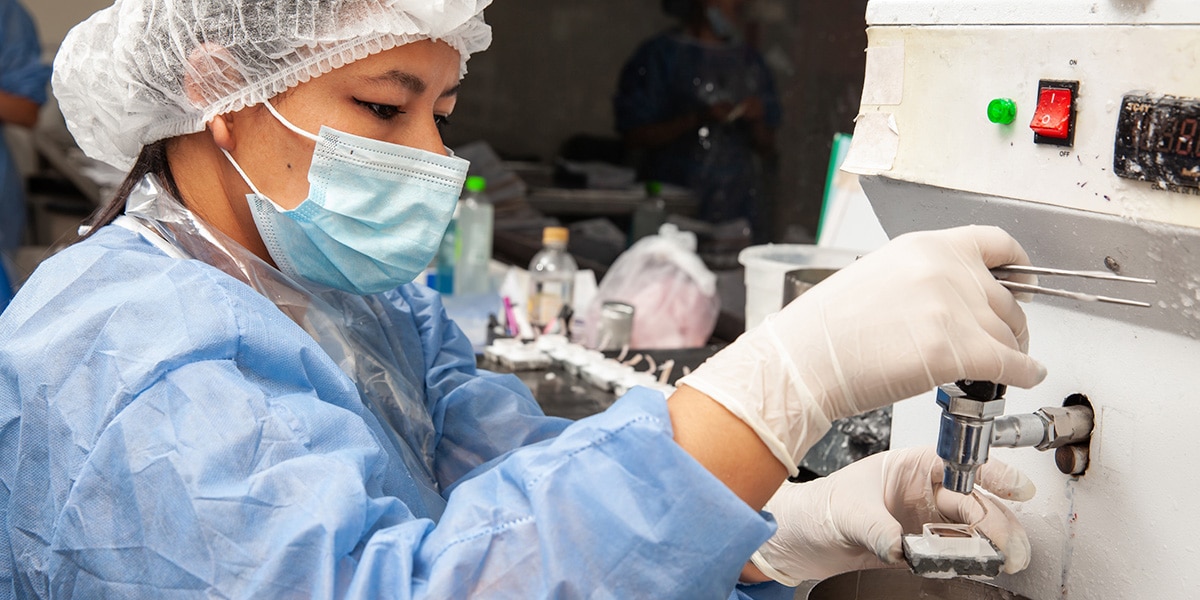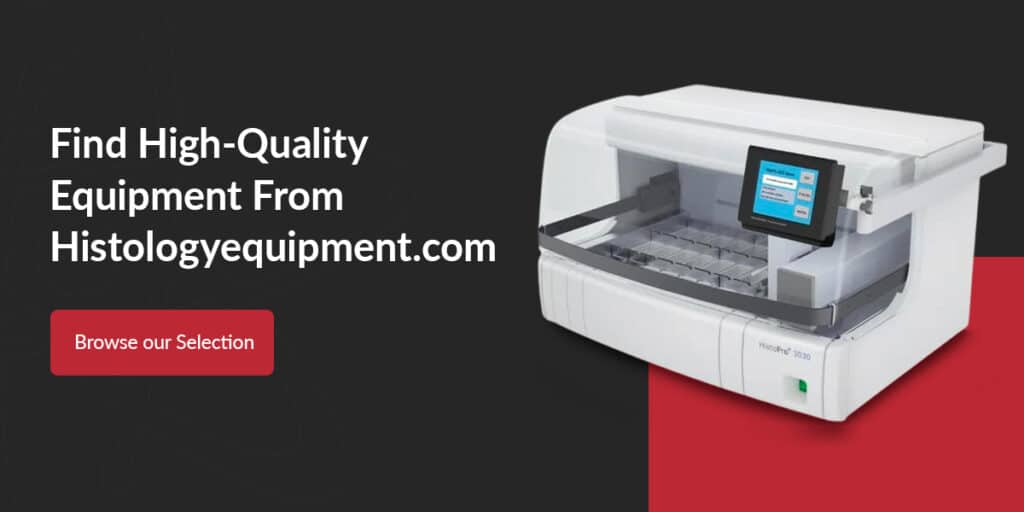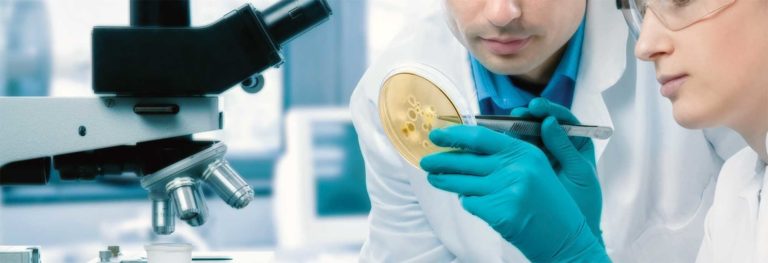Preventing Cross-Contamination When Paraffin Embedding
Cross-contamination in embedding stations can be severe and cause extensive concerns for facilities. Along with creating opportunities for misdiagnoses, contamination can lead to delays and downtime or a loss of credibility in your industry. Following the best practices for preventing cross-contamination is the best way to reduce these opportunities and discover accurate and reliable answers. Discover what causes cross-contamination and how you can prevent it.
What Causes Cross-Contamination in Pathology Research?
Contaminant fragments, sometimes known as floaters, are often easily identifiable. The external cell features can clearly indicate a contaminant, especially if the tissues are from specific organs. However, you cannot always rely on these distinctions in the lab. Contaminants can result in misdiagnoses that could lead to unnecessary or inappropriate treatments. In some cases, a misdiagnosis could be fatal.
Cross-contamination can be a result of various factors, including:
- Poor environmental conditions: Open samples can contact contaminants in the air, making it essential to have proper cleaning, analyzing and storing techniques. Some environmental factors, such as light exposure, humidity or temperature, can also affect sample quality.
- Unsanitary equipment or tools: Unclean equipment and tools can quickly contaminate samples. Sterile paraffin embedding tools are essential for lab processes. Additionally, it’s best to separate sterile equipment from other devices and instruments.
- Sample environments: Airborne contaminants can expose unsealed samples. Also, some specimens will suffer if the proper storage techniques are not in place. For example, your samples could be damaged if freezers, refrigerators or filters are not working correctly.
- Laboratory visitors and personnel hygiene: Contaminants can come from footwear and clothing or be the result of poor personal hygiene. Every person in the lab must wear proper attire, including gloves, face masks, protective footwear and apparel, and other personal protective equipment (PPE). Additionally, every person must adhere to safety and cleanliness guidelines, such as washing their hands, cleaning equipment and similar actions.
Preventing Lab Cross-Contamination
Although many factors can cause cross-contamination in labs, you can use several methods to prevent it. Taking the proper steps to introduce improved routines, cleaning requirements and storing techniques can minimize cross-contamination. Efficient practices allow for better and more consistent results at your facility while you continue delivering the care and service you expect to provide. Practice these methods to reduce these risks and prevent embedding cross-contamination in your lab:
1. Use One Cassette at a Time
Cassettes hold specimens during processing, storing and embedding. Although you may need to use multiple cassettes, it is imperative only to open one at a time. Doing so can prevent airborne contaminants from affecting multiple samples and lower the chances that particles from one specimen come in contact with another. This practice can also prevent accidental equipment use on numerous specimens, allowing you to ensure each tool has the proper cleaning and sanitization it needs before moving to another sample.
2. Open Items Very Carefully
You must also open items very carefully. These objects include cassettes, lens papers, mesh bags and lids. Carefully opening these items can prevent the object from flipping outward or becoming lost. Being careful can also reduce mistakes that often occur if you work too quickly, such as dropping items or mishandling objects.
Additionally, opening items carefully can limit the number of times you touch any one specific object. Restricting physical contact can reduce the chance of a human mistake when transferring a specimen. Reducing these transfers and touchpoints will decrease opportunities for contaminants to affect your samples.
3. Wipe Forceps Between Each Specimen

Forceps are helpful instruments for manipulating and gripping delicate objects, but they can carry contaminants from one specimen to another. It’s important to wipe forceps between every sample. Forceps with small grooves or teeth at the tips can be especially tricky, as small particles can hide in these grooves and make cleaning more challenging. You must also routinely clean your embedding center’s heated wells that hold these tools to prevent cross-contamination.
4. Wash Base Molds Often
Cleaning all equipment is an excellent way to minimize cross-contamination, but some pieces will need more attention than others. For example, non-disposable base molds require frequent cleaning. Along with enhancing the cleaning frequency, you should establish the best practices for using this equipment. For base molds, wipe a used mold with a gauze pad before using it for another sample.
5. Place Contaminated Blocks Away From the Specimen
Although you may implement every reasonable strategy to prevent contamination, there is always a possibility that transfer can occur. Be sure you remove any piece you believe may be contaminated from handling or grossing. Embed these pieces facing away from you in the far corner of the block. This practice makes it easy to locate and identify these pieces if you later determine contamination is present and need to remove them from the block.
6. Rely on High-Quality Equipment
Using quality equipment is another simple way to reduce contamination. Purchase high-quality equipment rather than opting for cheaper alternatives, and ensure you have enough equipment to reduce unnecessary transferring. Having adequate tools and equipment pieces in dedicated areas can limit cross-contamination by requiring fewer people to move from one space to another to complete the embedding process. Maintain all equipment to ensure they work efficiently to boost productivity and assure work integrity.
7. Implement Proper Cleaning
Following proper decontamination and cleaning techniques before and after each process can reduce the opportunity for contamination. A clean lab offers more accurate results, decreased hazards, improved organization and maintained compliance.
You should use the best practices for cleaning equipment, including using:
- Ultrasonic cleaners to clean glassware
- Batch sterilization for lab consumables
- Injection baskets for pipette cleaning
- Dishwashers for accessories and glassware
Additionally, schedule routine cleaning times to ensure your facility meets your expectations and regulations. During cleaning, throw out old samples that could attract germs and dust.
Find High-Quality Equipment From Histologyequipment.com
Histologyequipment.com is a market leader. We sell refurbished and new equipment for pathology and histology laboratories at the lowest market price while maintaining exceptional quality. Our extensive online catalog offers the latest industry models and refurbished machines for a low price with like-new equipment. With Histologyequipment.com, you can find histology supplies from the leading manufacturers. Prevent paraffin cross-contamination with our high-quality equipment. Contact us to learn more about our inventory now. Our equipment specialists can help you find the best solution for your facility.






